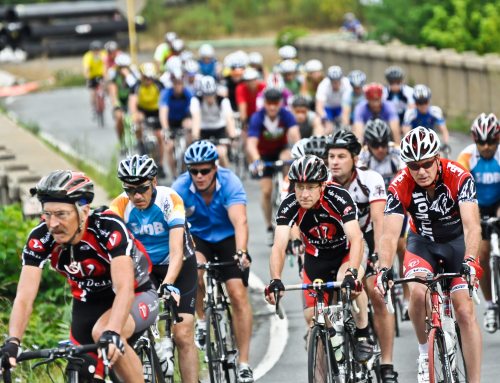By Thomas Henson, Jr.
Every dedicated cyclist knows basic road safety information. But Endurance-level cyclists need safety advice that meets their elevated performance level.
As an injury lawyer and avid cyclist, I know how experienced cyclists get hurt – sometimes catastrophically. These tips were inspired by real scenarios that resulted in serious, life-changing injuries.
CASE 1: Dog Attack
While you cannot control whether dog owners properly leash their pets, you can take steps to protect yourself:
- Drive a route before riding it to identify where dogs might live.
- Read cue sheets from online bike groups. There are sometimes useful comments, such as “Watch out for the brown dog on the corner.”
- Be prepared to sprint past the dog. This requires more than simply riding fast. Your goal is to “lead” the dog the same way a quarterback leads a receiver when throwing a football. Calculate the trajectory of where the dog will intercept your bike, and time your sprint to pass that point before the dog does.
CASE 2: Hit From Behind
Experienced cyclists become attuned to sounds of the road, and we sometimes try to make judgments about whether the driver sees us based on how the sounds change as a car slows down.
However, those judgments can be far from accurate. Please don’t rely on guesswork; always wear a mirror on your glasses or helmet. I know it can look geeky, but if you can see the actions of the car, you can adjust your actions to avoid a collision. If I could change one habit held by all my cycling friends, it would be to wear a mirror, because I know how many injuries it would prevent.
CASE 3: New Rider in a Paceline
Among experienced riders, the inches-tight choreography of the paceline is as natural as walking, but is risky just the same. However, inexperienced riders joining an established group can pose an increased safety hazard unless you take the time to show them the ropes. Before you allow any new cyclist to join your paceline, ask:
- Have you ridden in pacelines before? How many?
- What is your average training speed?
- What are the secrets of a safe paceline?
Although it may feel embarrassing to have such an exchange, speaking frankly before the ride could save someone’s life.
To orient a new cyclist to our team’s paceline, I start in the rear, and position the new rider directly in front of me, with other team members in the front. Instead of the typical few inches, I leave several feet between my front wheel and the new cyclist’s rear wheel. That gives me space to observe how well he or she rides in a group. Once I am confident the new person is aware of all the responsibilities expected of riders in a paceline, I gradually incorporate him or her into our group, never hesitating to give friendly safety reminders as needed.
Be smart, be seen, be safe. I’ll see you on the road.
# # #
Thomas serves on the board of directors of the Brain Injury Association of North Carolina (BIANC), advocating for brain injury victims and their families across North Carolina. He presented at the BIANC Annual Family Conference, and spoke at a 2011 Virginia conference for caregivers and brain injury professionals sponsored by the National Resource Center for Brain Injury and Virginia Commonwealth University.






